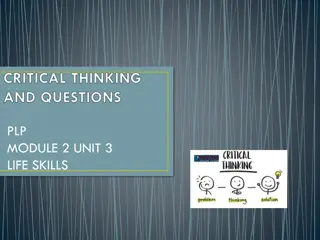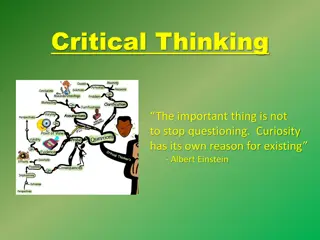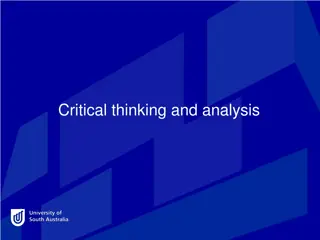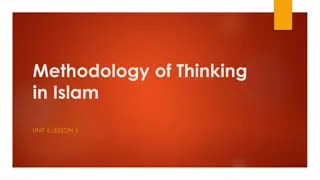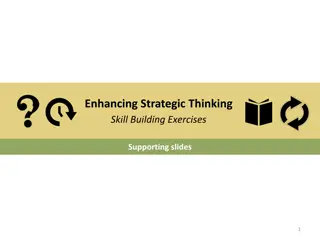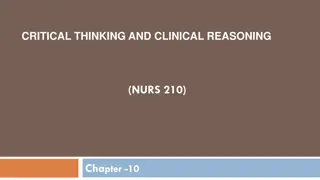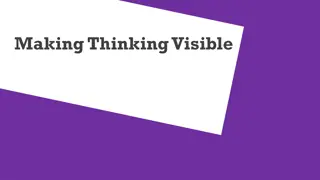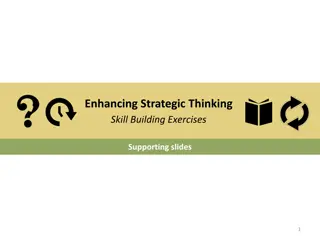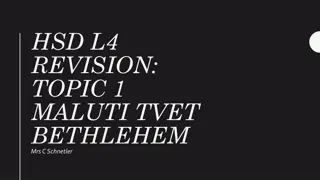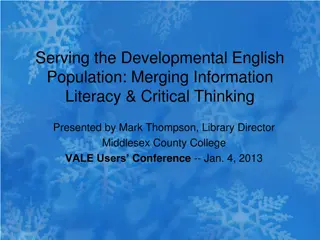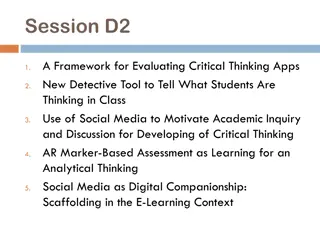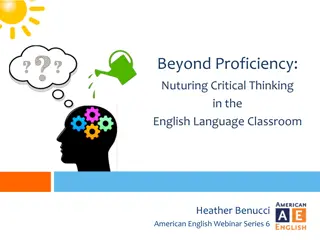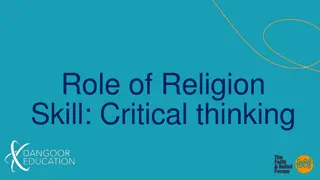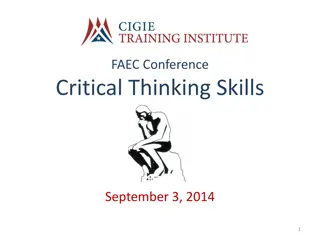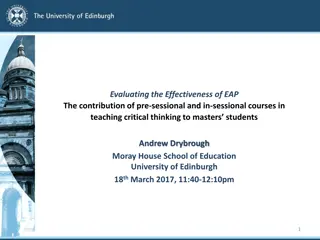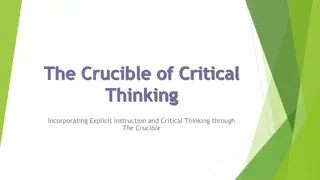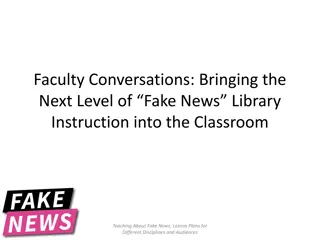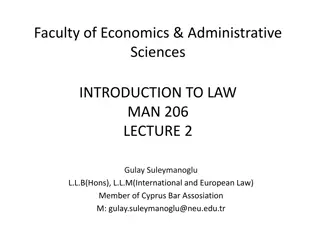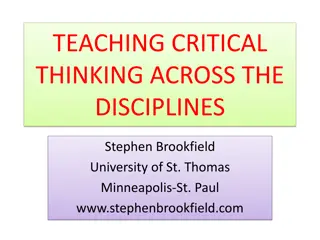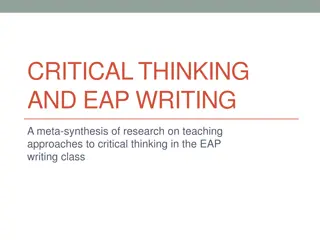Enhancing Critical Thinking in Business Law Assessment
Improve students' question creation skills in Business Law Assessment using an effective approach to enhance critical thinking and increase engagement. Valuable for workplace success. Encourages problem-solving and creativity, aiming for confident and knowledgeable submissions.
Download Presentation

Please find below an Image/Link to download the presentation.
The content on the website is provided AS IS for your information and personal use only. It may not be sold, licensed, or shared on other websites without obtaining consent from the author. Download presentation by click this link. If you encounter any issues during the download, it is possible that the publisher has removed the file from their server.
E N D
Presentation Transcript
Business Law: An Introduction (J56B 34) Outcome One Outline the significance of four areas of law affecting business today. Consumer law Employment law Data Protection legislation
Business Law: An Introduction (J56B 34) Assessment 1 - Outcome covered: 1 You have been asked by your college to help develop a new assessment, and an exemplar answer for the Business Law: An Introduction unit.
Business Law: An Introduction (J56B 34) Assessment 1 Difficulty in creating high-quality questions: Increased need for guidance Time-consuming: Unfamiliar and cause stress Needs good understanding
Business Law: An Introduction (J56B 34) Assessment 1 enhances critical thinking skills, increase engagement in, and responsibility for their own learning (Ruggiero & Mongeau, 2015). an effective assessment approach because students cannot create questions effectively when they do not understand the material they have been working with (Carless&Boud, 2018) Problem solving, critical thinking and creativity are highly valued and arguably key to much success in the workplace (world economic forum
Business Law: An Introduction (J56B 34) Assessment 1 Ensure assessment provided at outset Introduce concept of designing questions early on potentially in other classes too. Works well for group discussion Produces more confident and knowledgeable submissions Overall more relative than the previous LO1
Business Law: An Introduction (J56B 34) Outcome Two Explain the law of contract. Creation of a contract Defective contracts Misrepresentation Breach of contract
Business Law: An Introduction (J56B 34) Assessment 2 - Outcome covered: 2 You have 90 minutes to complete the following set of questions. Although held under supervised conditions, this is an open-book activity, and you can use any source of information you choose.
Business Law: An Introduction (J56B 34) Assessment 2 Struggle to find information needed in study materials quickly and efficiently, resulting in impairment of quality and time management issues. Students rely heavily on their study materials increased risk of sharing notes or look up answers online. Limited critical thinking and problem solving
Business Law: An Introduction (J56B 34) Assessment 2 Allows experience of exam style conditions Increased time on understanding and reflecting on content and therefore increased understanding(Karpicke & Blunt, 2011). Reduces the anxiety of assessment (von der Embse et al., 2019) and again encourages critical thinking (Taylor 2019)
Business Law: An Introduction (J56B 34) Assessment 2 Need to give some guidance on how to prepare for the open book Much more effective than the closed book. Produces more confident learners. Students appreciate the open book approach
Business Law: An Introduction (J56B 34) Outcome Three Compare and contrast the legal characteristics of the various types of business organisations. Sole traders and partnerships Private limited companies Public limited companies Third sector
Business Law: An Introduction (J56B 34) Assessment 3 - Outcome covered: 3 You have been asked to write an article not exceeding 1,000 words for inclusion in the business section of your local newspaper.
Business Law: An Introduction (J56B 34) Assessment 3 Develops greater understanding of topic (Vaezi & Brooks, 2016). Encourages a better understanding of how a business topic relates to the real world (Rubin, 2019) Improves research skills (Laughton, 2018). All the cited studies and many more, identified this approach improved communication and critical thinking.
Business Law: An Introduction (J56B 34) Assessment 3 Students unfamiliar with the structure and conventions of a newspaper article. Difficulty in focussing topic Limited use of sources of information Time-consuming: struggle to balance demands of writing with content of assessment.
Business Law: An Introduction (J56B 34) Assessment 3 Overestimation of content versus word count required caused worry. Encouraged introduction of press articles into other parts of learning- increased knowledge of current affairs as a positive by product. Increased constructive questions being asked - better engagement. Benefitted from keeping Unit Specification in parallel. Once established - students enjoyed this change of approach.
References Carless, D., & Boud, D. (2018). The development of student-generated questions: A framework for analysis. Innovations in Education and Teaching International, 55(6), 694-703. Dos Santos, B. L. (2015). Writing Across the Business Curriculum: Assignments That Work. Business Education Innovation Journal, 7(1), 58-66. Karpicke, J. D., & Blunt, J. R. (2011). Retrieval practice produces more learning than elaborative studying with concept mapping. Science, 331(6018), 772-775. Laughton, J. K. (2018). Building Critical Thinking Skills in the Business Classroom Through Current Events Discussions. Journal of Higher Education Theory and Practice, 18(5), 47-54. Rubin, B. (2019). Applying theoretical concepts to real-world problems: A business communication pedagogy. Journal of Business and Technical Communication, 33(4), 390-409.
References Ruggiero, D., & Mongeau, P. (2015). Self-questioning: A powerful tool for developing critical thinking skills. Journal of Developmental Education, 39(2), 18-19. Taylor, B. (2019). Open-book examinations and higher-order thinking skills. Assessment & Evaluation in Higher Education, 44(7), 1049- 1060. Vaezi, R., & Brooks, A. K. (2016). Writing Across the Curriculum: Improving Student Engagement and Performance in Business Communication Courses. Journal of Education for Business, 91(4), 179-186. von der Embse, N. P., et al. (2019). The effects of open-book testing on exam anxiety, preparation, and performance. Scholarship of Teaching and Learningin Psychology, 5(1), 1-16.





